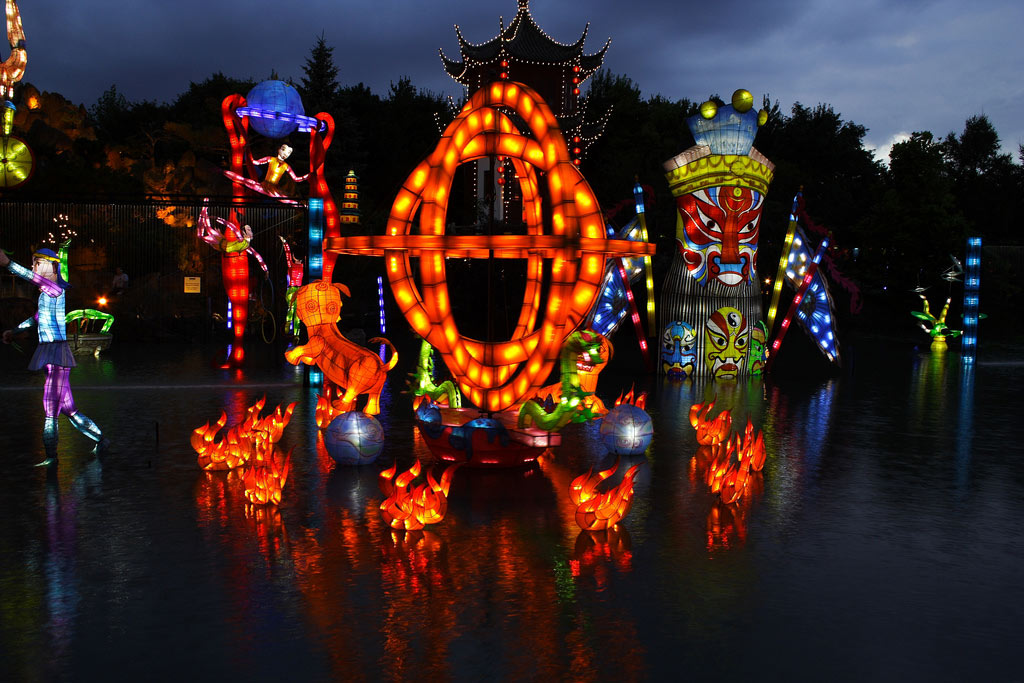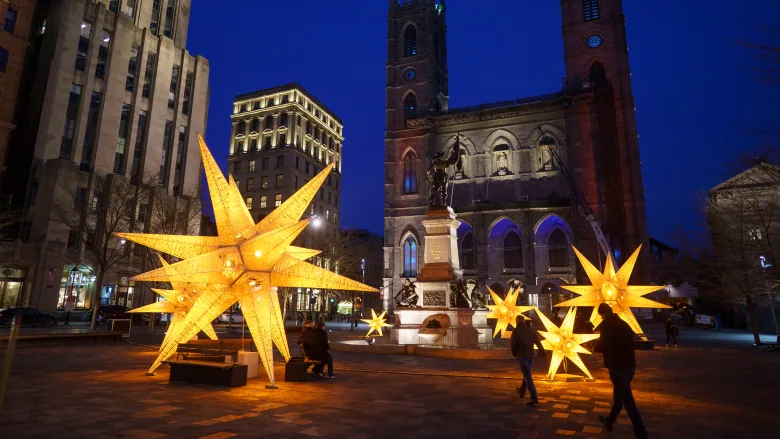Some seasoned tourists agree that Montreal is a preserve of French culture of the 17-19 centuries, untouched by European cosmopolitanism and multiculturalism. The old town, located on the banks of the picturesque St. Lawrence River, perfectly demonstrates the charm of France, transported to another continent. The only mountain on a relatively flat relief was named by the discoverer of New France Jacques Cartier “Royal”, which in French sounds like “Mont Royal”. This euphonious name of the hill gave the name to the city of Montreal formed at its foot.
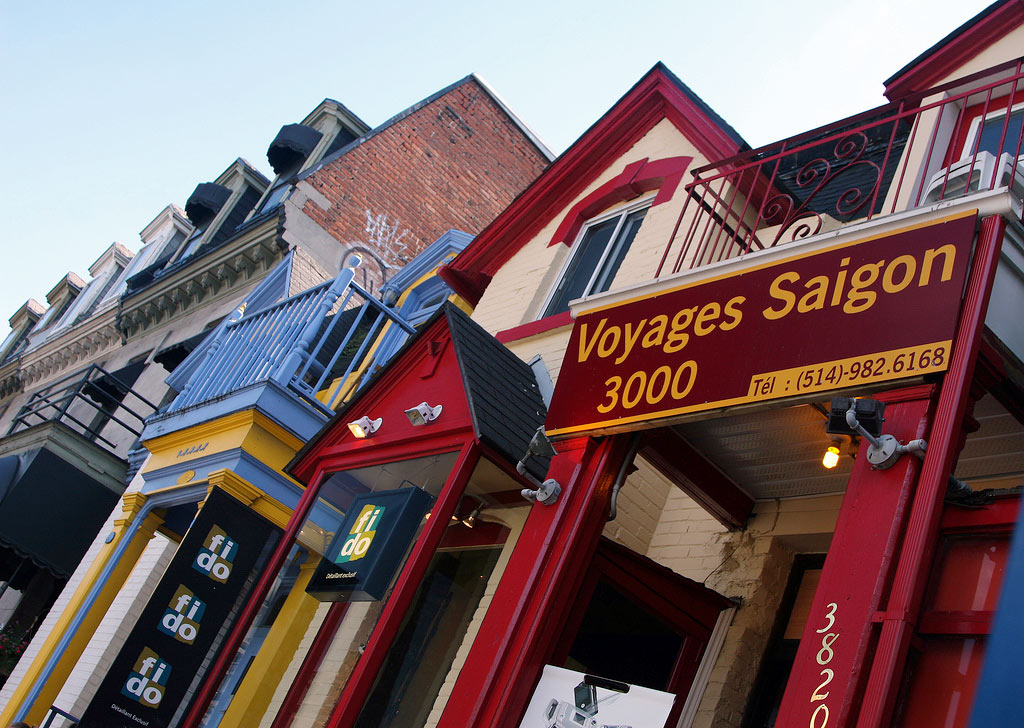
Old Montreal
Like any other city, Montreal has its so-called downtown or old city, a historical area, a starting point for urban development and the development of the cultural heritage of its citizens. Such areas attract many tourists with their authenticity and historical value of all architectural structures and monuments. Like many cities in France during the conquest of the American continent, urban planning in Montreal was based on gray stone for buildings and cobblestones. The old town includes must-see points:
- Place d’Armes;
- City Hall;
- Old Customs House;
- Notre Dame Basilica
The main business card of the city and a must-see point for visitors to Montreal is its Town Hall and Old Customs . The striking majestic architecture of the City Hall building is amazing and takes us from a modern American city to the distant times of the eighteenth century European cities.
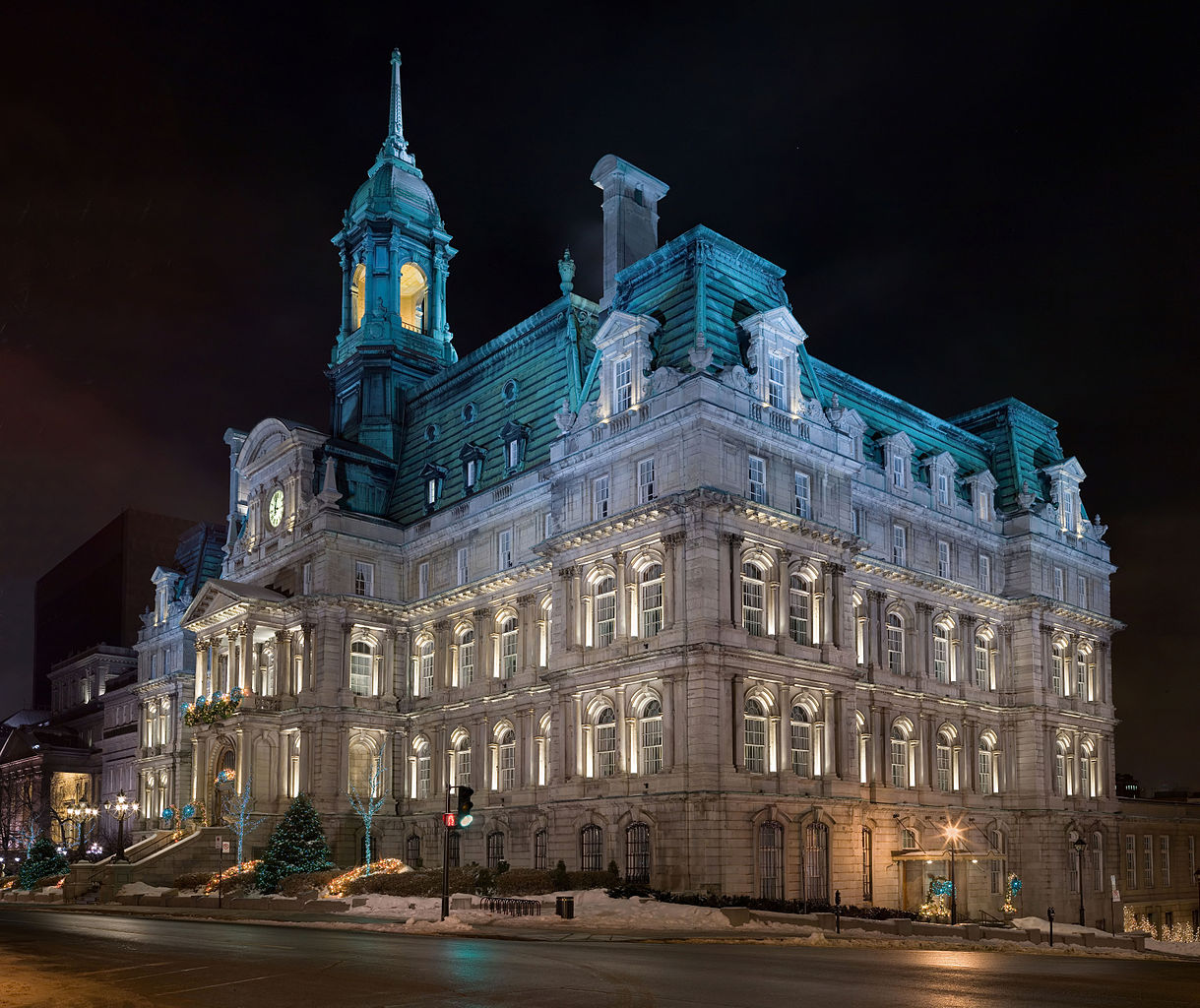
D’Arm dance
The famous Place d’Arm is located in close proximity to the City Hall and Notre Dame Cathedral. Today it is the most visited place in Montreal, which annually passes through itself up to five million tourists. The square is a national cultural monument and is included in the mandatory excursion programs. Many architectural masterpieces and cozy restaurants are compactly located here, where any tourist can comfortably sit at a table of a street cafe and feel the fullness of French charm on the American continent.
Basilica of Notre Dame
To the great disappointment of many tourists, this beautiful cathedral has nothing in common, except for its name, with the famous Notre Dame Cathedral. This tourist point has become a must on all excursion routes. The rich interior decoration and architectural masterpiece of the exterior attract more than two and a half thousand tourists every day. The two towers on the facade of the building give the cathedral its recognizability and have their own names “Perseverance” and “Restraint”. The bell tower of the basilica is equipped with an equally famous bell, the weight of which exceeds eleven tons, making a ringing sound that can be heard within a radius of fifteen kilometers. Another name you may find in travel guides is Notre Dame Cathedral .
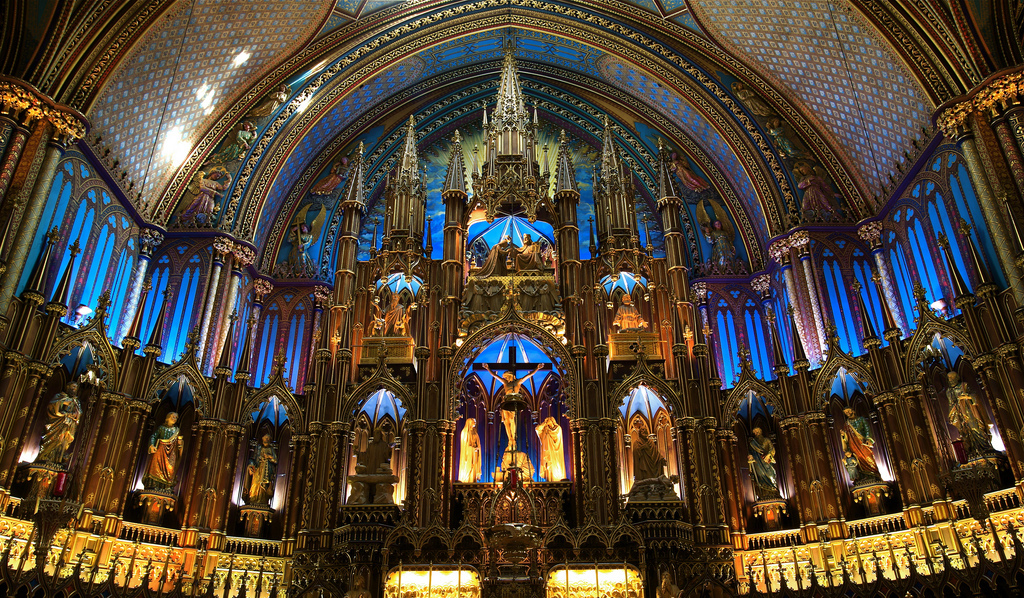
Notre-Dame-de-Bon-Secours
Do not confuse the Cathedral of Our Lady of Montreal (Basilica of Notre Dame ) with the Temple of Notre Dame de Bon Secourt . A distinctive feature of this unique cathedral is its altar, on which, contrary to popular Christian tradition, there are not statues of saints, but the noses of ships, or rather figures that adorned the noses of ships of the conquerors of North America in the eighteenth century.
Bonsecourt Market
For the uninformed tourist, the building of the covered Bonsecourt market may seem like a noble mansion or palace, but this two-story building was erected in the nineteenth century precisely as a trading platform. The market got its name from the neighboring Cathedral of Notre Dame de Bon Secourt . Today it is the most expensive shopping center in Montreal, which houses many cozy jewelry and souvenir boutiques and restaurants.
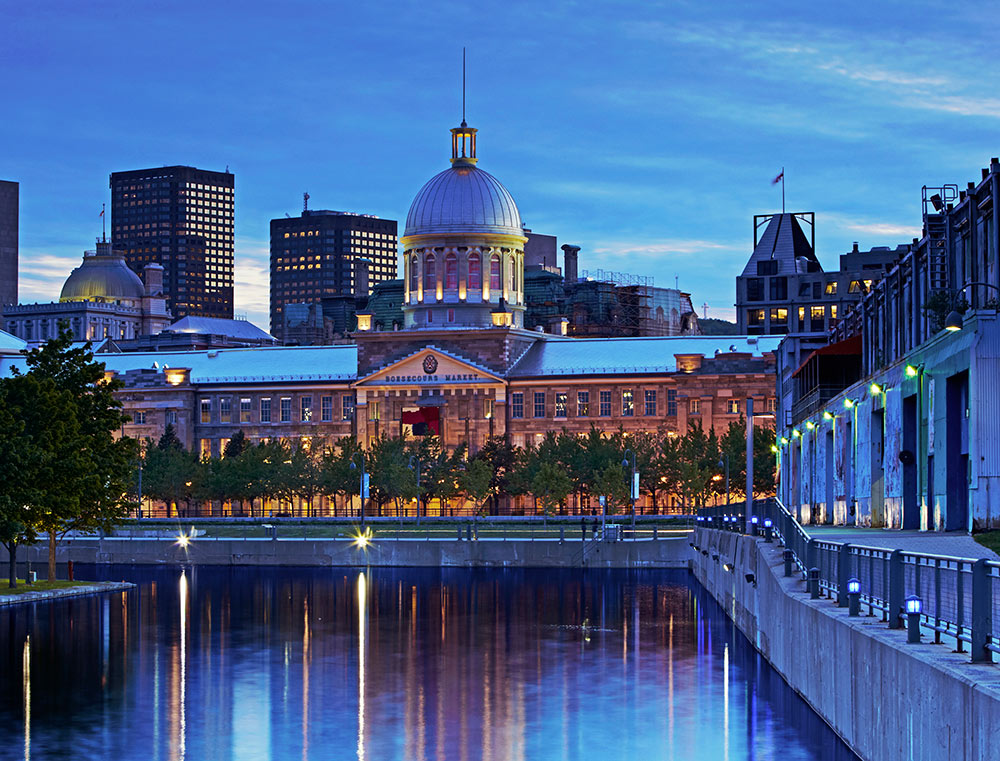
Habitat 67
If you are tired of the architecture of the colonial European style of the 18-19 centuries, the unique residential complex “Habitat 67” , built in a peculiar style of brutalism, will help you to add variety and delight the eye with the peculiar delights of urban planning. This house has become the hallmark of not only Montreal, but the whole of Canada. The structure consists of 354 cubes, as if unconnected with each other and hanging over the space in a chaotic manner. The complex consists of 146 apartments, the residents of which, according to the architects’ plan, were to experience all the advantages of a private cottage, being part of an apartment building. The construction of the house was timed to coincide with the 1967 Montreal World Exhibition and was supposed to personify affordable housing, but the extraordinary form of the structure and the worldwide fame of the house inflated the prices of apartments in it, leveling all the economy of the idea.
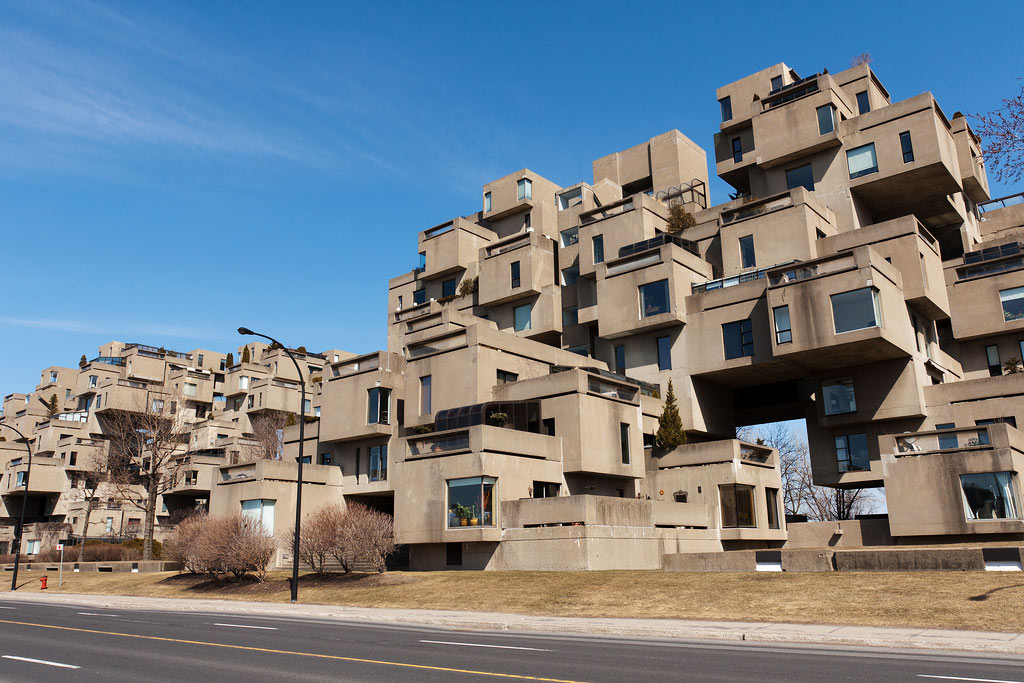
Montreal Museum of Fine Arts
This museum is one of the most renowned and oldest museums of art in Canada. The foundation of such a museum was a generous donation from one of the townspeople named Benayi Gibba in 1860. Today it contains:
- Creations of old masters;
- Contemporary art objects;
- Engravings;
- Paintings.
The museum has a unique collection of English porcelain, antique fabrics and the largest collection of unique tea boxes.
Opera House of Montreal
The Modern Opera de Montreal (L’Opera de Montreal) is a very young building. It was opened in 1980, but in such a short history it has already managed to enter the list of fifteen best opera houses in North America. To date, more than nine hundred performances have already been staged through the efforts of both local opera stars and world celebrities.
Botanical Garden
The landscape diversity of Montreal could not but concentrate in the unique botanical garden, which is considered one of the most beautiful sights of the city. The garden’s collection includes more than 22,000 different species of flora in various exhibitions, shady arboretums and arboretums. More than thirty theme parks and gardens let you experience the full botanical diversity of Canada and the entire North American continent.
